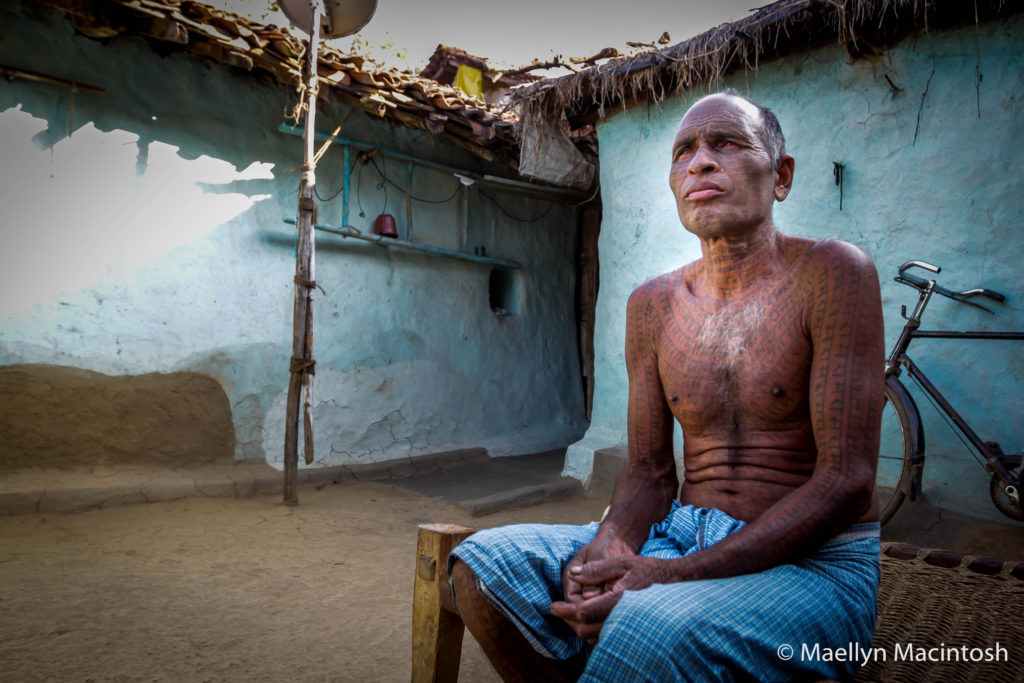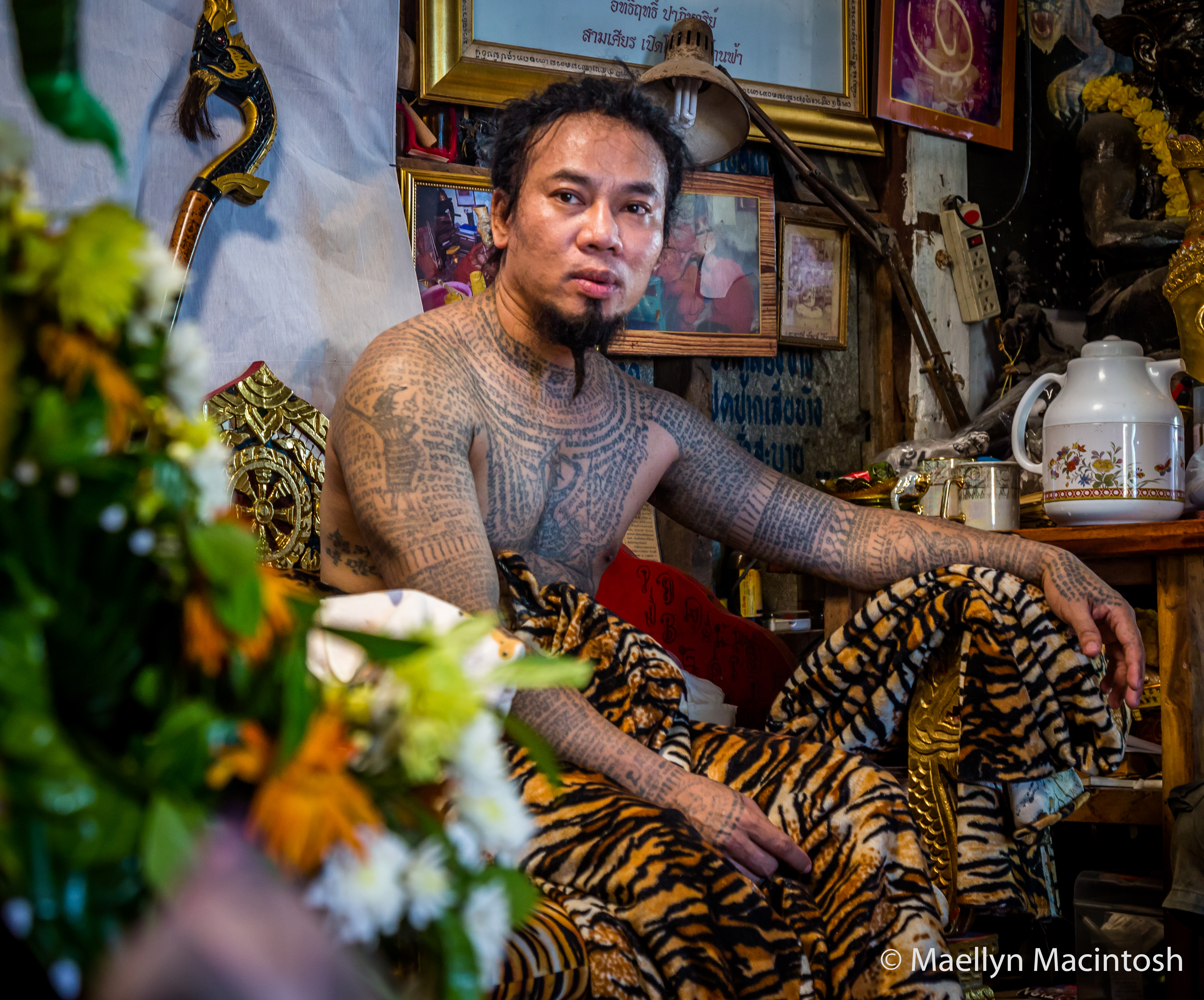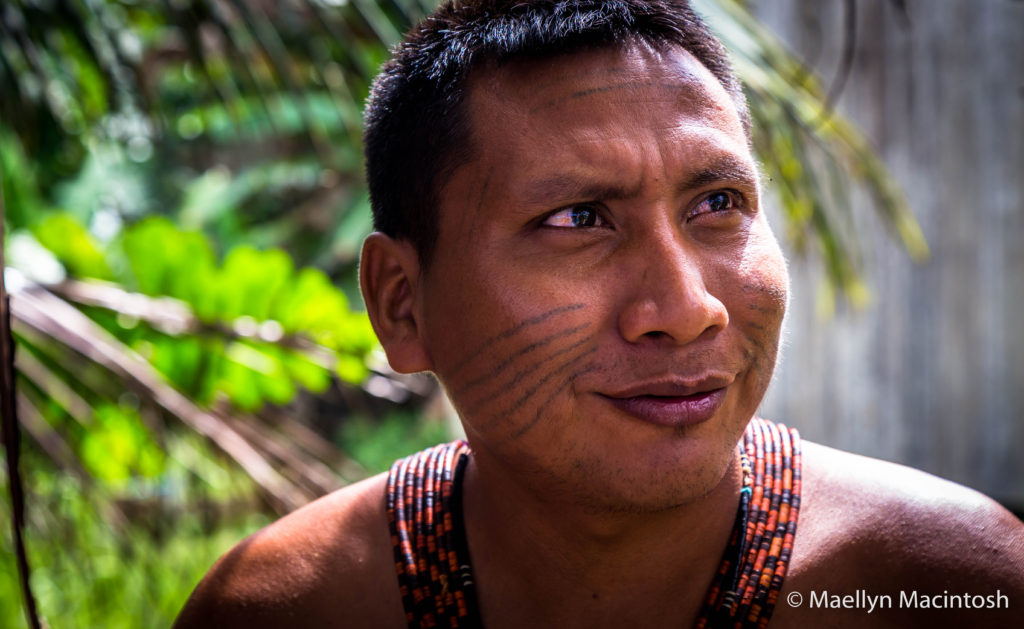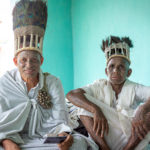First published in ‘Skin & Ink’ Magazine, Summer 2021
Written by Maellyn Macintosh

Hanging out with my wonderfully eccentric and heavily tattood friend Baawo, aka The Baron, a freakshow performer in London, we began discussing the origins of tattoos. As a tattoo virgin I had questions: Why do so many people the world over choose to permanently mark their skin? How did this all start?
I remembered my ex who had a tiger tattood on his back. He seemed to think it gave him some kind of supernatural strength. Baawo had many tales about the tribes around the world, their rituals and the meaning infused in every design. I had never thought of tattoos as more than an art form.
I decided then that I would travel the world and meet some of these people, and hopefully find some answers for myself. With a tiny budget and my camera, I headed off alone to see what I could find. Little did I know it would take me 10 years to complete my film!
As I began my travels I realised that there were many similarities across different cultures. The geometrics, magical animals, mythological beings, and the connection to spiritual rituals. The oldest tattoo traditions are part of the belief systems of indigenous peoples, most of which are animist, where everything in nature has a spirit or spiritual essence. And we can see that the tattoos take on a similar role.
In Thailand the Sak Yant tattoos are thought to actually contain the spirits of the creatures they depict, which come alive when they are blessed by a powerful monk or ajahn. Some of these are animals that offer supernatural powers and others are mythological beings like Leussi the hermit. The powerful tattoo master Ajahn Thoy, who himself is considered a wise and holy man, channels the spirit of Leussi once a year, his physical features contorting into an older man, and his followers falling into a trance, as their howls ring out through his small temple space.
The Iban of Borneo wear elaborate designs representing the spirits of plants and animals. The designs are said to be shown to the artists by the spirits of the forest. The Matis of the Brazilian Amazon wear facial tattoos representing the jaguar, the most powerful spirit of the jungle. The Gond women of central India wear small animal and plant designs that give strength to the parts of the body they are placed on.
When it comes to tattoos for healing, the idea of magic, belief, and physical and spiritual healing are tightly interwoven. The Sak Yant designs are offered as a way to balance a persons temparement. A fierce tiger gives a timid person confidence or a fighting spirit, for example. The Shiphibos of the Peruvian Amazon apply impermanent tattoos during ayahuasca healing rituals that act as spiritual avatars, connecting the physical with the spiritual. These designs, based on nature, are absorbed by the body, along with their spiritual and healing properties.
Tattoos could also mark someone as a healer. The Lady of Cao, a powerful priestess that ruled the Chicama valley in Peru around 1600 years ago, wears various magico-religious creatures like spiders, snakes and jaguars on her mummified body. It seemed that her tattoos, placed on her arms, also gave her supernatural strength.

In many of the older traditions, it was understood that the designs were channelled from the spirit worlds by shamans and healers. The Shiphibo use ayahuasca to enter these altered states of consciousness. It was known that the Moches in Peru, where the Lady of Cao ruled, used the San Pedro cactus. The Buddhist monks and Ajahns of Thailand enter these states by chanting and meditating, which is how Ajahn Thoy communicates with Leussi the hermit. The Iban and other tribes of Borneo speak of spirits that guide them and teach them the designs.
When it comes to tattoos for physical healing, the placement of these is also often determined by a shaman or healer who goes into a trance, entering the spirit worlds where he or she gains the knowledge of how best to heal. The San Bushmen of the Kalahari in Botswana do this through their trance dance.
Some of these traditions are lost, but across the world we can see that these tattoos are surprisingly similar. The tattoos of Otzi the Iceman, the 5300 year old mummy found frozen in a glacier in Italy, wears numerous tattoos placed on traditional acupuncture points. The same kind of tattoos are found in other indigenous communities across the world, including the Baiga in Central India, and the San of the Kalahari in Southern Africa.
When it comes to geometric designs, these can be seen across the world, and show up as simple combinations of parallel lines, dots, crosses and the likes. My first tattoo from the Baiga of india is very simple, but represents fire energy and femininity. These simple geometrics expand to more complex designs, such as those we see in the Sak Yant designs.

Considering all the similarities across continents and cultures, I believe the answers lie in the visions, which, regardless of location, follow the same principles. In my own explorations of altered states, the first stage includes visions of simple geometrics, and these morph into animals, mythological creatures or ancestor spirits. In fact, recent neurological tests have shown that no matter what method is used to enter altered states, these visions are almost universal. And in almost every community across the world where we see shamanism, we see these visions replicated in the patterns, designs and tattoos of that culture.
Could these tattoo designs have all originated from the visions of the shamans and healers of these communities? It seems possible to me.
To find out more about my journeys and what I learned from them, my documentary ‘Eternal Ink: Tattoos from the Spirit Worlds’, is available on Amazon Prime in English speaking regions, Tubi TV in the US, and Xumo.
